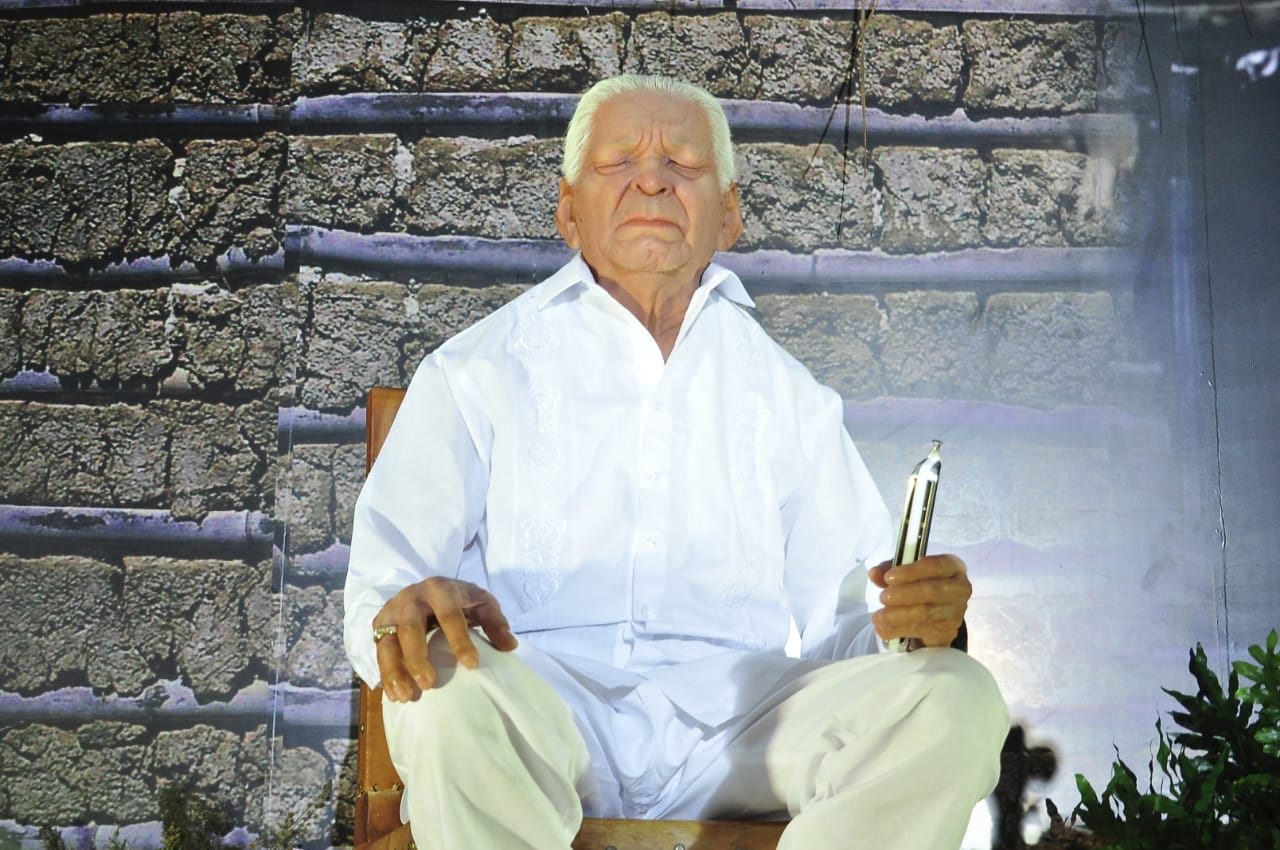BY EDITORIAL / EL PILÓN.
As a tribute to minstrel Leandro Díaz, this Friday his wax sculpture was unveiled in a solemn ceremony that took place this Friday afternoon at the Rafael Carrillo Lúquez Departmental Library in Valledupar.
The cultural act was an initiative of the Government of Cesar, which wanted to give recognition to one of the most important vallenato composers.
After 6:30 pm, the figure was unveiled in the middle of a stage suitable for the special occasion and applause in recognition of Homero del Vallenato.
The unveiling of the Leandro Díaz sculpture was preceded by a discussion about his life and work and a recital of minstrel songs -by the Carrascal brothers-, nuanced with guitars and piano and performed by his son Ivo Díaz.
This conversation had as panelists the composer and historian Julio Oñate Martínez who presented the book ‘El visionario’ on the life of Leandro Díaz; the singer and son of the minstrel, Ivo Luis Díaz and the Vallenato music statesman Wilfredo Rosales.
With the chords of “God does not leave me”, the event began.
“The difficulties for Leandro were a motivation. He ran to find the targets. Being born blind was a shame. As he suffered, he became a strong man,” Ivo Díaz, Leandro’s son, began by saying about the suffering caused by his blindness.
Next, the writer and composer Julio Oñate Martínez referred to the minstrel, who affirmed: “From the moment Leandro is born, the breaking latest news of the suffering of his life begins; As he grows up and, using reason, at the point of blows, stumbles, slips, falls, from a young age an inner halo told him that he had come into the world for something special and he had to survive ”.
Oñate Martínez also narrated parts of the life of the famous composer, some recorded in the pages of his book that was presented that same afternoon.
Wilfredo Rosales, known for his ability to memorize facts about Vallenato folklore, also participated.
Leandro Díaz achieved transcendence and immortality, thanks to his poetic work and the gift of describing nature and everyday life in his songs, despite his visual limitation.
The sculptural figure of the guajiro minstrel is part of a collection of wax statues that will represent the most influential musicians and composers of Vallenato folklore, which will be exhibited at the Vallenato Museum, one of the main attractions of the Vallenato Music Cultural Center, work that is being built in the center of the city and that will be delivered this year by the Government of Cesar.
Leandro Díaz is the second honoree with the unveiling of his wax figure after the first of these figures was unveiled on December 16, whose honoree
It was the Trirrey of the Vallenata Legend Festival, Alfredo Gutiérrez.
Leandro José Duarte Díaz was a Colombian singer-songwriter, composer and musician considered one of the symbols of vallenato and recognized for his descriptive composition.
The artistic work of Leandro Díaz, blind from birth, is made up of more than 350 songs, among which ‘La Diosa Coronada’ stands out, a song that was partially taken up in the epigraph of the novel ‘Love in the Times of Cholera’ by Nobel Prize for Literature Gabriel García Márquez.
